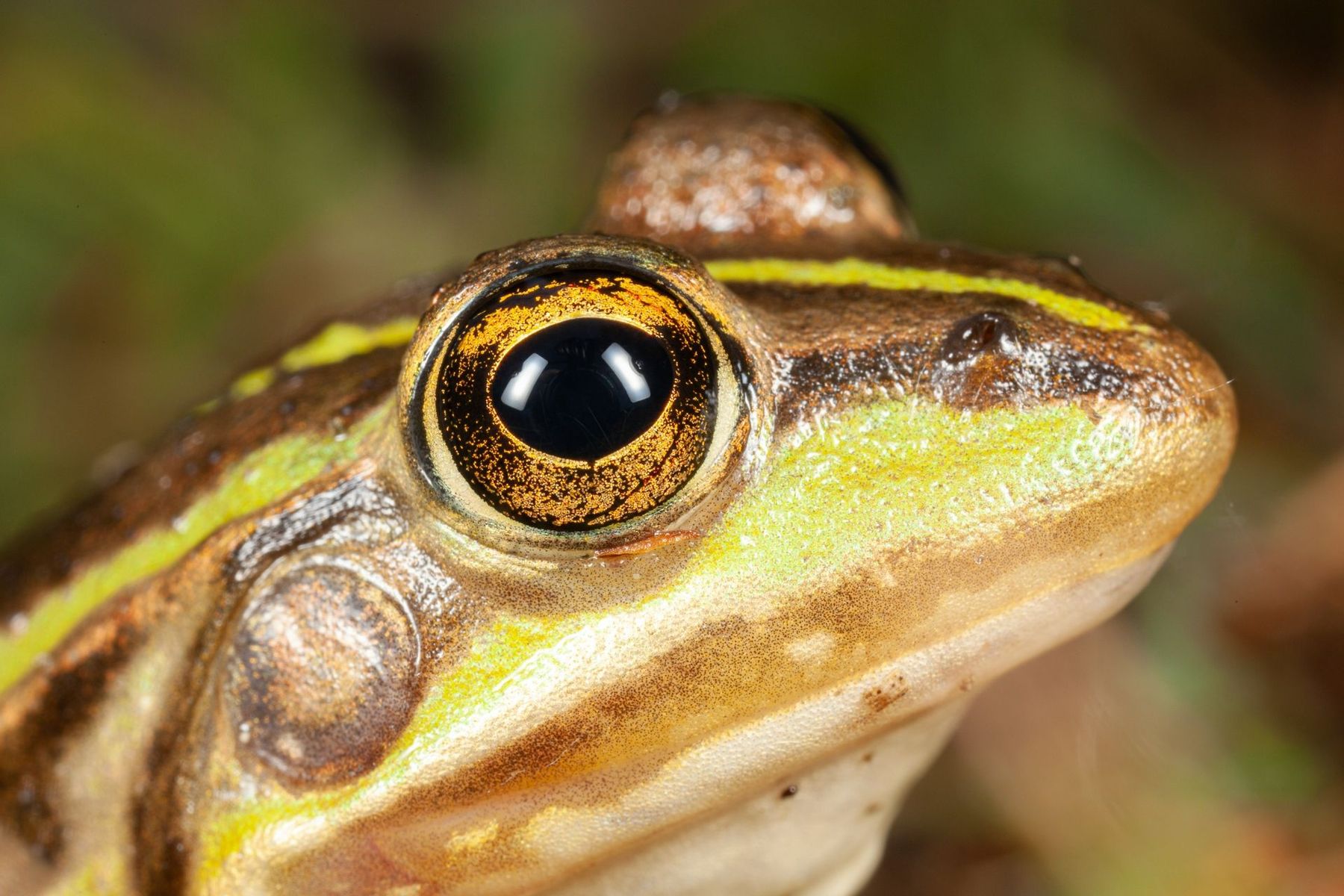Highlights from our 2022 Herpetology Tours

Operations Manager & Tour Leader
12th December 2022
By combining in-house herpetology expertise with in-country field experts, 2022 has been a sterling year for our new portfolio of herpetology tours.
Naturetrek offers the biggest selection of tours in this field and we expect to see strong participation in the tours in 2023/24. We warmly welcome participants of all levels of experience – being a keen naturalist is the only requirement – do join us!
NB: All photos shown below were taken during the tours. To view the images larger, please click on the crosshairs in the centre of each image.
Naturetrek’s inaugural herpetology holiday of the year took us to Ecuador, where leaders and tour participants alike enjoyed studying over 100 herp species including such amphibians as Pinocchio Rainfrog, Midas' Glassfrog, Linda's Treefrog, Ecuador Mushroomtongue Salamander, Spix's Horned Treefrog and Papallacta Marsupial Frog. Most of these amphibian species have been seen by few people from outside of Ecuador, and the group were likely the first British naturalists ever to see them in real life! The reptile highlights included Rainbow Boa, Two-striped Forest-pitviper, Green Anaconda, Amazon Pygmy Gecko, Gibba Turtle, Banded Tree Anole and huge Black Caiman, amongst many others.
The cold-blooded contingent was paired with an exciting warm-blooded assemblage, the highlights of which included Long-wattled Umbrellabird, Sword-billed Hummingbird, Torrent Duck, Red-bellied Macaw, Plate-billed Mountain Toucan, Giant Otter, Kinkajou, Linnaeus’ Red Howler and Brown-throated Sloth.
In April, with the onset of spring in Europe, back-to-back herpetology tours took 20 participants to the beautiful Peloponnese Peninsula in Greece for our second and third herp tours of the year. Each group was expertly guided by a co-author of the ‘Field Guide to the Amphibians & Reptiles of Britain and Europe’ and the tours returned having seen 37 and 41 species of herp respectively, alongside a plethora of typical Mediterranean birds, butterflies, orchids and mammals.
Reptile and amphibian highlights seen on both tours included African Chameleon, Nose-horned Viper (ssp. meridionalis), the endemic subspecies of Balkan Spadefoot Toad (ssp. chloeae), the Peloponnese endemics Greek Rock Lizard and Limbless Skink, Worm Snake, and multiple individuals of Leopard Snake.
Mammals across the two tours included Mediterranean Monk Seal – from our hotel! – Western Broad-toothed Field Mouse, Golden Jackal, Polecat and Stone Marten. Birding highlights included Eagle Owl, Western Rock Nuthatch, Great Spotted Cuckoo, Booted Eagle, Osprey, Dalmatian Pelican, nest-building Penduline Tit, Collared Flycatcher and Rock Thrush. Brilliant invertebrates included velvet ants, Empusa fasciata, ladybird spiders (Eresus spp.), Hebe Tiger, Dark Spreadwing, Eastern Dappled White, three species of swallowtail, Gruner's Orange-tip, and Southern White Admiral, alongside a plethora of fantastic orchids
Two groups joined Amphibian and Reptile Conservation Trust experts to search for Britain’s reptiles and amphibians. One group was successful in seeing all species of native reptiles in the UK including two of the rarest, Sand Lizard and Smooth Snake, whilst the other group was stumped only by Adder – a species which would normally be all but guaranteed on these reserves, showing that nature can never be predicted! Both groups also managed to have excellent views of the UK’s rarest native amphibian, the Natterjack Toad, as well as fantastic views of several other species including Common Toad, Palmate Newt, and Great Crested Newt. Both groups enjoyed some other fantastic wildlife encounters, particularly of note being a Nightjar sitting in the open during daylight, a rare sighting that many will retain as a life-long memory!
Two departures of this holiday visited the authentic southern regions of Morocco, travelling in early May and mid-September. Drought conditions made finding reptiles and amphibians, both of which are highly sensitive to such conditions, challenging but with perseverance we found multiple highlights.
Notable snakes across the two tours included Egyptian Cobra, Sahara Sand Viper, Horseshoe Whip Snake, Algerian Blind Snake, Western False Smooth Snake and Mountain Viper. The lizards included Moroccan Spiny-tailed Lizard, 20 individuals of Northern Elegant Gecko, Helmethead Gecko, and Harris’ Dwarf Gecko – a species described in 2019 and seen only by a handful of British naturalists.
Other tour highlights included fantastic and prolonged views of North African Elephant Shrew, Beautiful Scorpion, Desert Mantis, Northern Bald Ibis, multiple Lesser Egyptian Jerboa, Trumpeter Finch, Greater Hoopoe-Lark, Cream-coloured Courser and Egyptian Nightjar. Copious amounts of Moroccan tea were enjoyed, and the group will undoubtedly retain great memories of staying in authentic accommodation, hosted by wonderfully welcoming locals, in Morocco’s seldom-visited south.
In June, participants relished exploring Albania’s beautiful landscapes in search of their reptile and amphibian fauna, returning with a total of 38 species between the two Classes. Highlights included two subspecies of Nose-horned Viper (ssps. ammodytes and montandoni), Alpine Newt (ssp. veluchiensis – arguably the most beautiful subspecies), Dalmatian Algyroides (from two Clades), Dahl's Whip Snake, Balkan Terrapin, Dalmatian Wall Lizard, Kotschy's Gecko, Yellow-bellied Toad, European Tree Frog, and the near-endemic Albanian Pool Frog.
Nightingales and Golden Orioles sang from the grounds of nearly all of the tour’s lovely accommodations, and other avian highlights included Black-headed Bunting, Eastern Black-eared Wheatear, Red-backed, Lesser Grey and Woodchat Shrikes, White-backed Woodpecker, good views of Eurasian Scops Owl, huge numbers of Alpine Swifts circling over Lake Prespa, where Dalmatian Pelicans were also present alongside good numbers of Pygmy Cormorants. Mammals included Hazel Dormouse, some huge individuals of Northern White-breasted Hedgehog, multiple Beech Marten and a Coypu.
Invertebrates were in delightful abundance and included such brilliant species as the stick insect Bacillus atticus, Balkan Goldenring, Bladetail, White-legged Damselfly, Saga pedo, Balkan Marbled White, Queen of Spain Fritillary, Spotted Fritillary, Nine-spotted Moth, and memorable views of a daytime flying Stag Beetle.
A superbly successful tour returned over 75 species of reptile and amphibian, including some of the world’s most sought-after herpetology species. Lizards included Armadillo Lizard, Cape Dwarf Chameleon, Augrabies Flat Lizard and a range of 22 species of terrestrial and arboreal geckos. Delightful tortoises included one of the world’s rarest in Geometric, the world’s smallest in Speckled Dwarf and the near-endemics: Parrot-beaked and Angulate Tortoise.
Snakes included Spotted Harlequin Snake, Bug-eyed House Snake, Rhombic Egg-eater, Mole Snake, plus Horned, Many-horned and Namaqua Dwarf Adders. Amphibians included Namaqua Rain Frog, Paradise Toad and Clicking Stream Frog.
Though the tour focused on the ectothermic species, we had excellent views of numerous mammals such as Common Genet, Cape Grey Mongoose, Klipspringer, Springhare, Zorilla, and megafauna, whilst birds and a wonderful flora added much interest around sightings of our target species.



 Loading search...
Loading search...



































